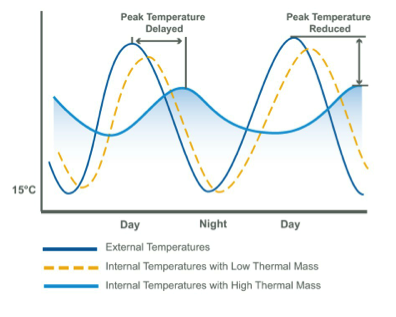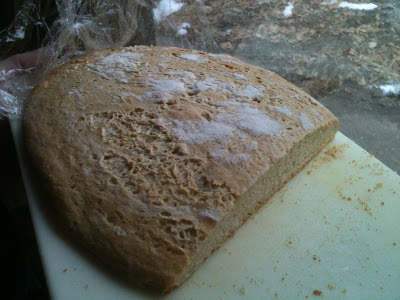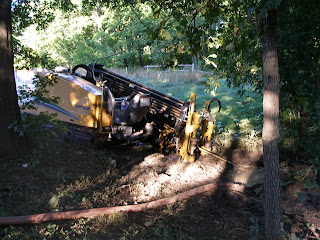Thermal Mass and Insulation, Local Conditions Dictate the Function
Notes from SouthWoods
Advanced Permaculture Series
Thermal Mass and
Insulation, Local Conditions Dictate the Function.
 Building
strategies in changing climates vary based on the biomic tendencies of the
region. Cold or Hot regions also
have sub regions of precipitation, wind, and landforms. Speaking of cold
climate strategies, principles and solutions still apply; its the various materials and conditions on site
that dictate the implementation. In mountainous and higher latitudes, the
cold can be relentless. Unlike a Desert, the daytime and nighttime temperatures
(Diurnal Temperature Variations) may not fluctuate enough to use thermal mass
to buffer the changes, such as with adobe or earth bag homes. The continuous lower temperatures
quickly transfer into the thermal mass, and in time, begin to absorb the heat
within the structure. Large log or
stone homes, which keep cool in summer as the temperatures cool at night and rise
during the day, lose their benefit in a cold climate. This relationship between
structure and function needs serious consideration when planning a natural
building. Should the thermal mass be inside? Such as with a rocket stove
fireplace and insolation in the exterior walls. Or, should the thermal mass be
on the outside to moderate the diurnal temperature differential of hot days and
cold nights? There would seem to be hybrid combinations for every climate. How
dense and how thick should the walls be in each situation? What is the strategy
of isolation and mass density to achieve the best efficiency?
Building
strategies in changing climates vary based on the biomic tendencies of the
region. Cold or Hot regions also
have sub regions of precipitation, wind, and landforms. Speaking of cold
climate strategies, principles and solutions still apply; its the various materials and conditions on site
that dictate the implementation. In mountainous and higher latitudes, the
cold can be relentless. Unlike a Desert, the daytime and nighttime temperatures
(Diurnal Temperature Variations) may not fluctuate enough to use thermal mass
to buffer the changes, such as with adobe or earth bag homes. The continuous lower temperatures
quickly transfer into the thermal mass, and in time, begin to absorb the heat
within the structure. Large log or
stone homes, which keep cool in summer as the temperatures cool at night and rise
during the day, lose their benefit in a cold climate. This relationship between
structure and function needs serious consideration when planning a natural
building. Should the thermal mass be inside? Such as with a rocket stove
fireplace and insolation in the exterior walls. Or, should the thermal mass be
on the outside to moderate the diurnal temperature differential of hot days and
cold nights? There would seem to be hybrid combinations for every climate. How
dense and how thick should the walls be in each situation? What is the strategy
of isolation and mass density to achieve the best efficiency? Insulation is used much more in colder
climates to abate the infusion of extreme temperatures into a structure.
Homes have thick walls and roofs filled with millions of airlocks cells that
moderate the temperature change between the two sides. Double and triple pane
glass is used in the windows to again add a barrier to temperature change
between the solid materials. Air and gases are used between the panes of glass,
much like a thermos bottle, which uses a vacuum chamber between the outer wall
and inner container filled with hot liquid. Reducing the energy transfer on the
edges increases the energy storage capacity of the space.
Insulation is used much more in colder
climates to abate the infusion of extreme temperatures into a structure.
Homes have thick walls and roofs filled with millions of airlocks cells that
moderate the temperature change between the two sides. Double and triple pane
glass is used in the windows to again add a barrier to temperature change
between the solid materials. Air and gases are used between the panes of glass,
much like a thermos bottle, which uses a vacuum chamber between the outer wall
and inner container filled with hot liquid. Reducing the energy transfer on the
edges increases the energy storage capacity of the space.
So we have two principles working in a cold
climate. There is the thermal mass of
the structure including the air or water within the structure and the degree of insulation, which buffers the
temperature changes across the layers of the edge or surface.
While working in Haiti
I found that the dense block buildings a cool place in the day, but frigid each
night. As a result, I lay on top of my 0ºF Polarguard sleeping bag in the
sweltering temps of the late evening and around 2 AM, when the cold woke me up,
I crawled inside the warmed bag. Part of the solution might be integrating our
own habits with the dynamics of the built environment, just as we do the
natural environment. Inside our homes we can insulate ourselves with fingerless
gloves, and a sweater, or stocking cap. This is much easier than another cord
of firewood or gallons of fuel oil. Start with zone “0”. Cultural adaptation is
much easier than mechanical constructs.
Organisms use respiration and change their insulation
depending on conditions. The dynamic relationship between thermal mass and
insulation is optimized when managed as needed (warm blooded), rather than
being a static and passive system (cold blooded). Low temperatures extract energy from sources of heat. Cold
climate systems slow that heat energy loss and minimize calories used to
replace it.
Phase Change Materials
Phase
change materials (PCM) are special materials for increasing the heat storage capacity without adding extra weight to the
structure. Here the phase change is used for energy storage. As the temperature increases, the material
changes phase from solid to liquid and during the chemical process energy is
absorbed. This way the room temperature will be lower. Later when the
temperature decreases, the material changes phase from liquid to solid and
dissipates the heat. This energy is expended and removed from the room through
night-time warming of the air. Ventilation can be increased with a fan and the air
blown directly on the phase change mass. The temperature of the PCM itself
remains constant during the reactions.
For building
applications, the phase change should take place near the comfort temperatures,
between 18 and 25°C. The phase change point depends on the type of material
applied. If this temperature is too low, the heat storage capacity is exhausted
too early, if it is high, starts too late and the influence is small.
Microencapsulated
PCM (e.g. paraffin) can be mixed to interior plaster, wallboard panels or
aerated cement blocks and applied in the building without any special measures,
just like conventional materials (Figure 63). Encapsulation is important, as
the PCM must not be in direct contact with other materials to avoid damages due
to the “melting” process. 30 mm plaster
coating with 30 % PCM has a heat storage capacity equivalent to 180 mm concrete
(http://www.new4old.eu/guidelines/D3_Part2_H2.html




Comments